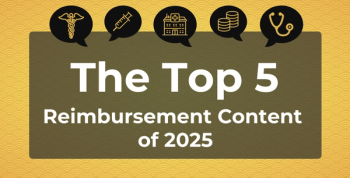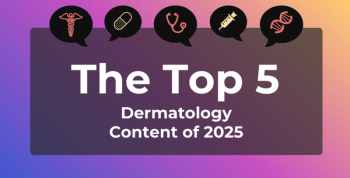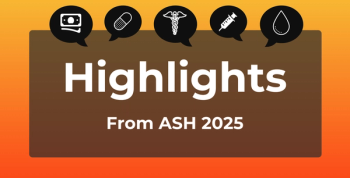
Specialty Drug Costs Drive Medicare Part D Dermatology Expenditures
Key Takeaways
- Specialty medications are driving up dermatology drug spending, with an annual increase of 29.3% from 2013 to 2022.
- Prescription growth, not price increases, is the primary driver of increased spending on specialty medications.
The rapidly increasing prescriptions for expensive specialty medications, rather than their price growth, are the primary driver of escalating dermatology Medicare Part D expenditures, necessitating policies that balance innovation, access, and affordability.
Specialty medications are rapidly driving up
Targeted therapies are altering the treatment of inflammatory skin conditions, but specialty medications come with a hefty price tag. These types of specialty drugs are defined by their high cost, often challenging administration, specific handling requirements, or the need for ongoing clinical oversight. While highly effective and safe for common dermatologic conditions like plaque
Prior research indicates that adopting the most affordable biologic within each drug class could cut treatment costs by 44%, prompting questions about current pricing and prescribing habits.2 In 2021, drug costs varied significantly, from $12,413 for infliximab to $70,043 for risankizumab. Furthermore, a separate study found that teenagers with atopic dermatitis who took lebrikizumab experienced improved anxiety and depression symptoms, suggesting this treatment offers benefits beyond just disease management by enhancing patients' overall quality of life.3
To assess the growing financial impact of specialty medications, researchers conducted an economic analysis.1 This study utilized Medicare Part D prescriber data from 2013 to 2022, focusing on prescription drug claims from both physician dermatologists and dermatology-focused advanced practice clinicians. The analysis, performed between December 2024 and May 2025, specifically aimed to understand the escalating costs of specialty medications by examining 3 key factors: prescriptions, prices, and innovation (new therapies and indications).
Analyzing more than 94.9 million prescription drug claims from nearly 25,000 dermatology providers, the study revealed a significant surge in Medicare Part D drug spending. From 2013 to 2022, total inflation-adjusted spending by dermatologists skyrocketed from $768 million to $2.95 billion, an average annual increase of 16.1%. This growth was overwhelmingly driven by specialty medications, which saw an annualized spending increase of 29.3%, jumping from $237 million to $2.4 billion.
In stark contrast, nonspecialty drug spending grew by a mere 0.7% annually over the same period. By 2022, specialty medications accounted for a staggering 80.9% of all dermatology drug spending, a sharp rise from just 30.8% in 2013, representing 98.4% of all spending growth.
While the average cost per prescription rose by 9% annually, the number of prescriptions from dermatology providers grew at a slightly slower rate of 6.6% each year. When examined separately, prescription growth outpaced price increases for both specialty and nonspecialty medications. However, the overall increase in average drug cost for dermatology appears to be driven by the rising average price of these medications.
When specialty and nonspecialty medications were analyzed separately, it became clear that the primary driver of increased total spending was the rapid rise in prescriptions for expensive specialty drugs, not price increases. For dermatology providers, specialty medications made up a mere 0.8% of all prescriptions in 2013, but this jumped to 2.9% by 2022, a 23% annual growth rate in prescriptions. In contrast, nonspecialty medications actually saw their average 30-day supply price drop from $68 in 2013 to $42 in 2022, even after accounting for inflation.
From 2013 to 2022, the average cost of specialty medications rose from $3738 to $5872 per prescription, marking a 5.1% annual increase above inflation. However, this price hike accounted for a smaller portion of the overall cost surge, with 80.5% of the overall growth in specialty drug costs due to increased prescriptions, not prices.
Within dermatology, specialty drug spending was incredibly concentrated, with a mere 10 drugs responsible for 98.3% of all specialty drug spending throughout the study period. New therapies introduced from 2013 onward fueled 69.5% of the spending growth in dermatology. By 2022, these newer drugs represented $1.5 billion in spending, making up 51.4% of all dermatology drug spending that year. This surge was largely driven by a rapid increase in prescriptions for these 6 novel medications, with annual growth rates ranging from 31% to a staggering 140%.
While established specialty medications (adalimumab, etanercept, ustekinumab, and vismodegib) drove a smaller portion of prescription increases (12.3%), their higher annual price growth (9.2%) still contributed significantly to spending (29.4% in 2022) compared with newer drugs.
The study's limitations include relying on gross drug costs without proprietary rebate data. However, due to modest Medicare Part D specialty rebates (14% vs 54% for other brands), the specialty drug spending share is likely underestimated. Prescription growth findings, especially for new drugs, remain robust despite this. The analysis, limited to Medicare and unable to identify all dermatology providers, may also underestimate spending, particularly when considering the typically more generous commercial insurance coverage or Medicaid's formulary-related access issues despite lower out-of-pocket costs.
“Future work should update this analysis to get a full view of the impact of new JAK [Janus kinase] inhibitors and increased competition from biosimilar drugs,” study authors concluded.
References
- Kong EL, Mostaghimi A. Quantifying the role of specialty medications in Medicare Part D expenditures in dermatology. JAMA Dermatol. Published online July 16, 2025. doi:10.1001/jamadermatol.2025.2142
- Steinzor P. Rising costs of biologics for plaque psoriasis highlight savings potential. AJMC®. April 24, 2025. Accessed July 21, 2025.
https://www.ajmc.com/view/rising-costs-of-biologics-for-plaque-psoriasis-highlight-savings-potential - Kaltwasser J. Lebrikizumab improves quality of life, disease control in patients with atopic dermatitis. AJMC. May 15, 2025. Accessed July 21, 2025.
https://www.ajmc.com/view/lebrikizumab-improves-quality-of-life-disease-control-in-patients-with-atopic-dermatitis
Newsletter
Stay ahead of policy, cost, and value—subscribe to AJMC for expert insights at the intersection of clinical care and health economics.








